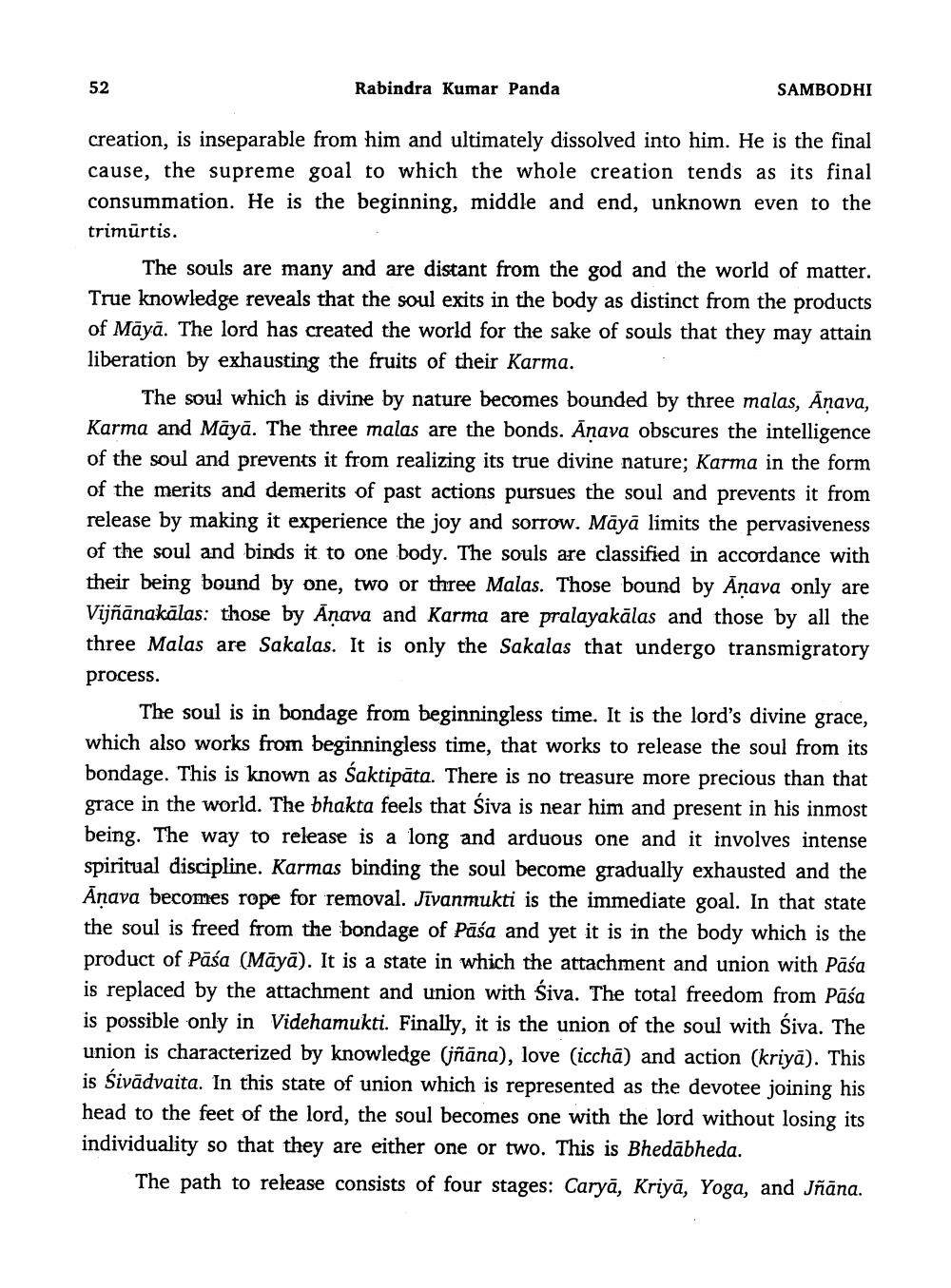________________
52
Rabindra Kumar Panda
SAMBODHI
creation, is inseparable from him and ultimately dissolved into him. He is the final cause, the supreme goal to which the whole creation tends as its final consummation. He is the beginning, middle and end, unknown even to the trimūrtis.
The souls are many and are distant from the god and the world of matter. True knowledge reveals that the soul exits in the body as distinct from the products of Māyā. The lord has created the world for the sake of souls that they may attain liberation by exhausting the fruits of their Karma.
The soul which is divine by nature becomes bounded by three malas, Anava, Karma and Māyā. The three malas are the bonds. Ānava obscures the intelligence of the soul and prevents it from realizing its true divine nature; Karma in the form of the merits and demerits of past actions pursues the soul and prevents it from release by making it experience the joy and sorrow. Māyā limits the pervasiveness of the soul and binds it to one body. The souls are classified in accordance with their being bound by one, two or three Malas. Those bound by Anava only are Vijñānakālas: those by Anava and Karma are pralayakālas and those by all the three Malas are Sakalas. It is only the Sakalas that undergo transmigratory process.
The soul is in bondage from beginningless time. It is the lord's divine grace, which also works from beginningless time, that works to release the soul from its bondage. This is known as Saktipāta. There is no treasure more precious than that grace in the world. The bhakta feels that Śiva is near him and present in his inmost being. The way to release is a long and arduous one and it involves intense spiritual discipline. Karmas binding the soul become gradually exhausted and the Ānava becomes rope for removal. Jīvanmukti is the immediate goal. In that state the soul is freed from the bondage of Pāśa and yet it is in the body which is the product of Pāśa (Māyā). It is a state in which the attachment and union with Pāśa is replaced by the attachment and union with Śiva. The total freedom from Pāśa is possible only in Videhamukti. Finally, it is the union of the soul with Śiva. The union is characterized by knowledge (jñāna), love (icchā) and action (kriyā). This is śivādvaita. In this state of union which is represented as the devotee joining his head to the feet of the lord, the soul becomes one with the lord without losing its individuality so that they are either one or two. This is Bhedābheda.
The path to release consists of four stages: Caryā, Kriyā, Yoga, and Jñāna.




